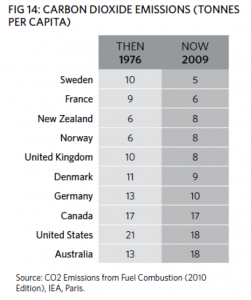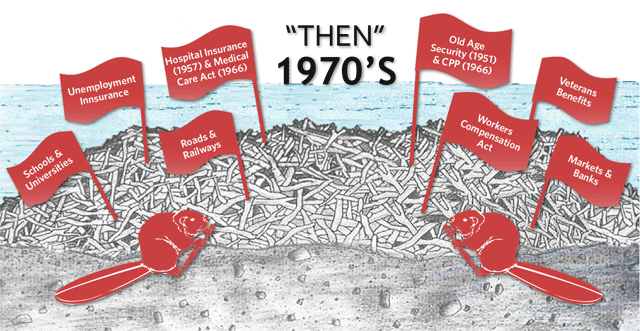gensqueeze.ca That’s the new site to follow!
Picture yourself as part of something bigger, something inspiring — a group of Canadians from all ages and walks of life coming together to give generations X, Y & Millennial a chance. A chance to deal with lower wages and higher costs for housing, tuition, and child care. A chance to cover the extra cost of saving for retirement. A chance to deal with these problems without compromising the young families they have now, or the families they may one day want.
How do we inspire people to advance this common cause?
We take inspiration from shirtless dancers (nothing R-rated!), and the insightful narration by Derek Sivers in this must-watch 3-minute video: Leadership Lessons from a Dancing Guy!
A central lessons is: Be simple to follow
Initially, the network of Gen Squeeze partners thought it was sufficient to make the best available research easy to understand. We worked hard to bring information to the public in Op Eds, news stories, reports and public lectures. And we’ll continue to do this, because you need the best new information, as it becomes available.
The problem is that making research simple to understand doesn’t make us simple to follow. We learned this from you, when many asked ‘what should we do with all this information about gen squeeze?’
Now we have an answer for you at gensqeeze.ca!
We’ve identified 10 Things Everyone Can Do – each in Under 10 Minutes. You’ll find these on our new website being launched today. The site makes it easy to Get Involved to Reduce the Squeeze in little ways, everyday. With gensqueeze.ca, we invite you to join our campaign.
The campaign has one simple goal for the next three months. Shine a light on the generational spending gap: Canadian governments spend around $45,000 annually for every retiree, compared to just $12,000 for each Canadian under age 45.
Why shine a light on this imbalance? Because we believe that spending on younger generations — whether for family, housing, education, environmental conservation, etc. — will be in short supply until political parties of all stripes finally acknowledge the large spending gap between generations.
The next major political campaign in Canada will be held in BC on May 14, 2013. Elections provide unique opportunities to draw attention to problems. In preparation, we will pilot engagement strategies that invite you to act.
1. Amplify your voice. Make yourself heard in common call for a Better Generational Deal.
2. Want kids some day, or have young kids now? Then join us to call for three policy solutions to make a New Deal for Families.
3. Want or have grandchildren? Become a Boomer for a Better Deal.
Following the BC election, we’ll take stock of our successes and failures and get ready to work with partners province by province. We want to build a national movement in time to influence the half dozen elections scheduled for 2015/16, including the next federal election.
Our campaign is non-partisan. You can vote Conservative, Green, Liberal, NDP or otherwise and still care about the Squeeze. What we ask is that you encourage the parties and politicians of your choice to narrow the generational spending gap. Even a small change can make a big difference for Gen Squeeze – one we can make while safeguarding the medical care and retirement income security needed by our aging population.
There is no campaign without you. We need you to add your voice, tell your story, share it with friends, family, colleagues, and neighbours. As Derek Sivers’ video shows, the shirtless dancing guy didn’t make the movement. His dance became a movement only when others joined in. We know the same is true for the Gen Squeeze campaign
So now that you know what you need to do, here’s what we promise:
- Humour and Fun. Politics is important. So is having fun. The Gen Squeeze campaign is about both.
- Appreciation and Encouragement. We appreciate and encourage all levels of participation, because we know small acts can make a big difference. Especially when they’re repeated.
- Respect. We promote respectful relationships with partners, proponents and critics.
- Connection. We support opportunities to connect as much as possible, in person and on-line. Sign up for our campaign newsletter to stay apprised of the latest developments.
- Suggestions, not Prescriptions. Because you are time-strapped, we suggest ways to participate efficiently in our campaign. But these are suggestions only, and we value input about alternate ways to mobilize.
- Clear, Concise Information – You can count on us for leading research about the generational spending imbalance, the squeeze on younger generations, and available solutions. Since your time is limited, and information overload is real, we will always strive to provide clear, concise evidence to help you take action.
Sincerely,
Paul, Lynell and Cassin.
























